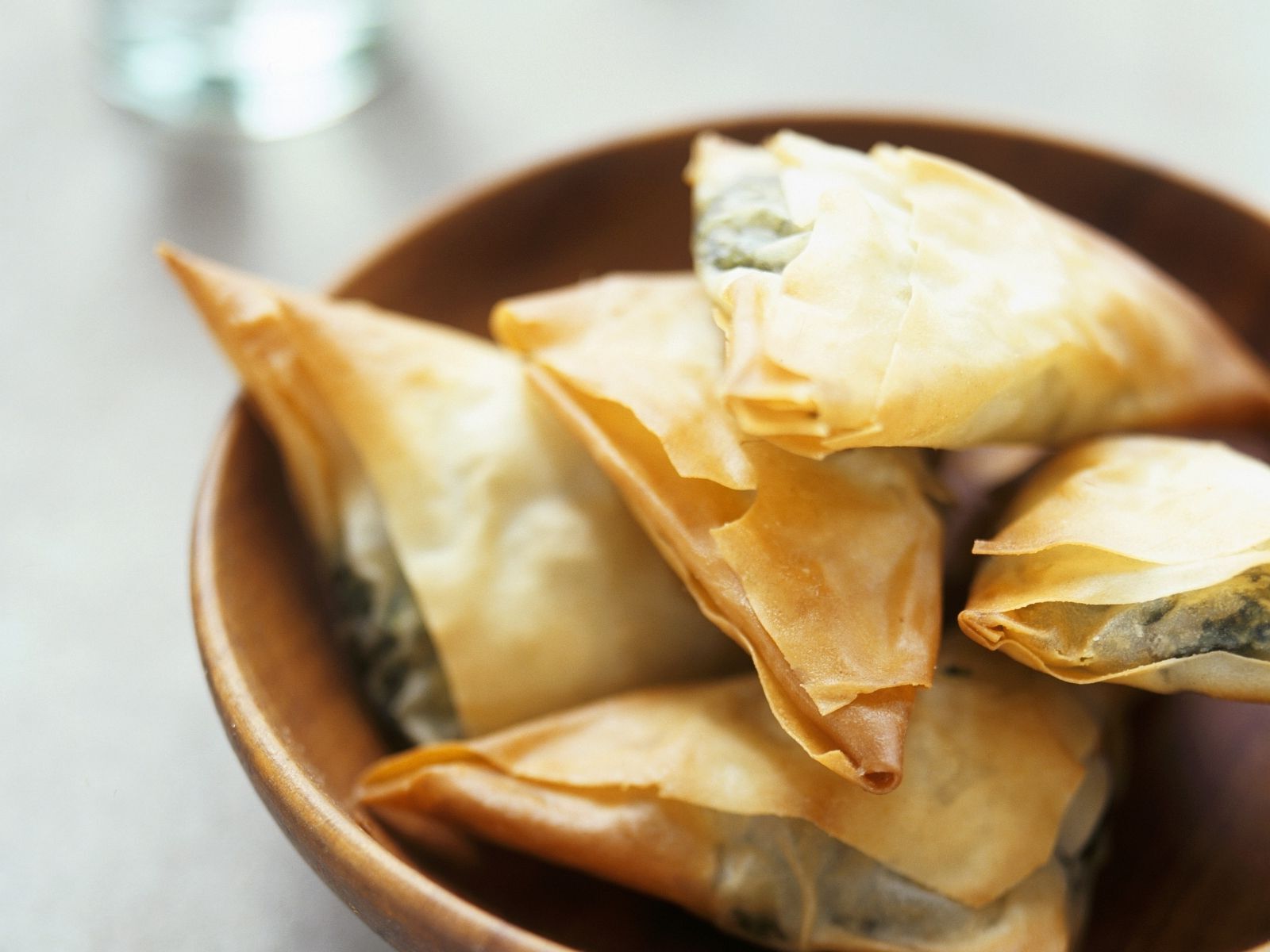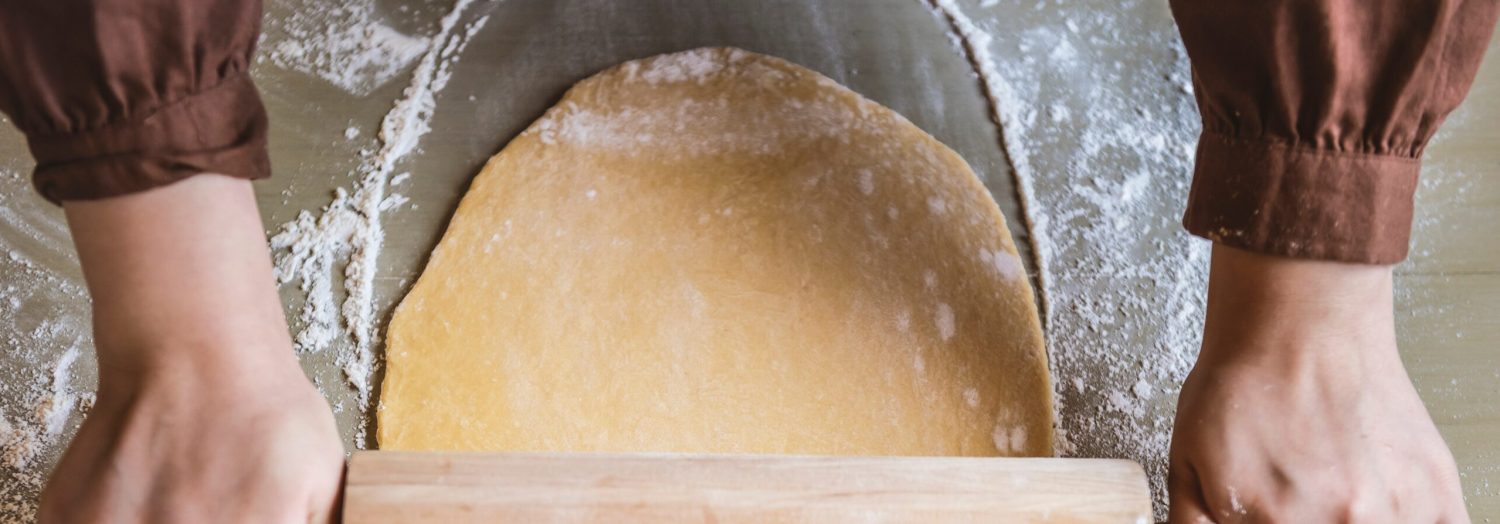Creating your own phyllo dough at home can be a rewarding experience, offering a fresh and delicate base for a variety of dishes. This recipe provides a simple and straightforward method to achieve thin, flaky layers that are perfect for both sweet and savory applications.
Most of the ingredients in this recipe are common pantry staples. However, if you don't usually keep vinegar on hand, be sure to pick some up at the supermarket. It's essential for adding a slight tang and helping to tenderize the dough.

Ingredients For Phyllo Dough Recipe
Flour: The base of the dough, providing structure and texture.
Salt: Enhances the flavor of the dough.
Water: Helps to bring the dough together and achieve the right consistency.
Olive oil: Adds richness and helps to create a tender texture.
Vinegar: Contributes a slight tang and helps to tenderize the dough.
Technique Tip for Phyllo Dough
When rolling out the phyllo dough, ensure your surface is well-floured to prevent sticking. Use a long, thin rolling pin for better control and even thickness. Rotate the dough frequently and apply gentle, even pressure to achieve the desired thinness. If the dough starts to shrink back, let it rest for a few minutes before continuing.
Suggested Side Dishes
Alternative Ingredients
All-purpose flour - Substitute with whole wheat flour: Whole wheat flour can provide a slightly nuttier flavor and more fiber, making it a healthier option while still maintaining the structure needed for phyllo dough.
All-purpose flour - Substitute with gluten-free flour blend: For those who are gluten intolerant, a gluten-free flour blend can be used to achieve a similar texture and consistency.
Salt - Substitute with sea salt: Sea salt can be used as a direct substitute, offering a slightly different mineral content and flavor profile.
Room temperature water - Substitute with sparkling water: Sparkling water can add a bit of lightness and airiness to the dough, which can be beneficial for creating flaky layers.
Olive oil - Substitute with coconut oil: Coconut oil can provide a different flavor and is solid at room temperature, which can help in creating a more flaky texture.
Olive oil - Substitute with avocado oil: Avocado oil has a high smoke point and a neutral flavor, making it a good alternative for phyllo dough.
Vinegar - Substitute with lemon juice: Lemon juice can provide the necessary acidity to help tenderize the dough and add a subtle citrus flavor.
Vinegar - Substitute with apple cider vinegar: Apple cider vinegar offers a mild fruity flavor and the acidity needed to help with the dough's texture.
Alternative Recipes Similar to This
How to Store or Freeze Your Dish
Allow the freshly made phyllo dough to cool completely before storing. This ensures that any residual heat doesn't create unwanted moisture, which can affect the dough's texture.
Wrap each sheet of phyllo dough individually in plastic wrap. This prevents them from sticking together and makes it easier to use only what you need later.
Place the wrapped sheets in an airtight container or a resealable plastic bag. This helps maintain the dough's freshness and prevents it from absorbing any odors from the fridge or freezer.
For short-term storage, keep the phyllo dough in the refrigerator. It will stay fresh for up to a week. Make sure the container is sealed tightly to prevent the dough from drying out.
For long-term storage, freeze the phyllo dough. It can be stored in the freezer for up to three months. When you're ready to use it, thaw the dough in the refrigerator overnight. Avoid thawing at room temperature, as this can cause the dough to become too soft and difficult to work with.
If you have leftover phyllo dough after using some sheets, re-wrap the remaining sheets tightly in plastic wrap and return them to the airtight container or resealable bag. Store them back in the refrigerator or freezer as needed.
When working with phyllo dough, always keep the sheets you're not using covered with a damp cloth. This prevents them from drying out and becoming brittle.
If you notice any condensation inside the container or bag, gently pat the phyllo dough sheets dry with a paper towel before using. Excess moisture can make the dough sticky and challenging to handle.
For added convenience, consider pre-rolling the phyllo dough sheets before freezing. This way, they are ready to use straight from the freezer, saving you time during meal preparation.
Remember to label your containers or bags with the date of storage. This helps you keep track of how long the phyllo dough has been stored and ensures you use the oldest dough first.
How to Reheat Leftovers
Preheat your oven to 350°F (175°C). Place the phyllo dough on a baking sheet and cover it with aluminum foil to prevent it from drying out. Heat for about 10-15 minutes or until warmed through.
If you prefer a quicker method, use a microwave. Place the phyllo dough on a microwave-safe plate and cover it with a damp paper towel. Microwave on medium power for 20-30 seconds, checking frequently to avoid overcooking.
For a stovetop method, heat a non-stick skillet over medium heat. Lightly brush the skillet with olive oil. Place the phyllo dough in the skillet and cover with a lid. Heat for 2-3 minutes on each side until warmed through.
If you have an air fryer, preheat it to 320°F (160°C). Place the phyllo dough in the air fryer basket and heat for 5-7 minutes, checking halfway through to ensure it doesn't overcook.
For a steam method, place the phyllo dough on a heatproof plate and set it in a steamer basket over boiling water. Cover and steam for about 5 minutes or until heated through.
Best Tools for Making Phyllo Dough
Mixing bowl: Use this to combine the flour and salt, and later to mix in the water, olive oil, and vinegar to form the dough.
Measuring cups: Essential for accurately measuring the flour and water.
Measuring spoons: Necessary for measuring the salt, olive oil, and vinegar.
Rolling pin: Use this to roll out the dough into thin sheets.
Damp cloth: Cover the dough balls with this to keep them moist while they rest.
Floured surface: This is where you will knead the dough and roll it out. Ensure it is well-floured to prevent sticking.
Knife: Use this to divide the dough into equal parts.
Kitchen scale: Optional, but helpful for ensuring the dough is divided into equal parts.
Plastic wrap: Optional, for covering the dough balls if you prefer not to use a damp cloth.
How to Save Time on This Recipe
Prepare ingredients in advance: Measure and set aside flour, salt, water, olive oil, and vinegar before starting.
Use a stand mixer: Save time by using a stand mixer with a dough hook to mix and knead the dough.
Resting time multitask: While the dough rests, prepare other components of your recipe.
Roll all at once: Roll out all dough balls into thin sheets in one go, then stack them with parchment paper in between.
Store for later: Make extra phyllo dough and freeze it for future use.

Phyllo Dough Recipe
Ingredients
Phyllo Dough Ingredients
- 2 cups All-purpose flour
- ½ teaspoon Salt
- ¾ cup Water room temperature
- 2 tablespoon Olive oil
- 1 tablespoon Vinegar
Instructions
- 1. In a mixing bowl, combine flour and salt.
- 2. Add water, olive oil, and vinegar. Mix until a dough forms.
- 3. Knead the dough on a floured surface for about 10 minutes until smooth.
- 4. Divide the dough into 4 equal parts. Roll each part into a ball.
- 5. Cover with a damp cloth and let rest for 30 minutes.
- 6. Roll each ball out into a thin sheet using a rolling pin.
- 7. Use as needed in your recipes.
Nutritional Value
Keywords
Suggested Main Courses and Desserts
More Amazing Recipes to Try 🙂
- Keto Bread Recipe50 Minutes
- Russian Tea Recipe20 Minutes
- Sugar Cookies Recipe25 Minutes
- Flat Iron Steak Recipe25 Minutes
- Party Punch Recipe10 Minutes
- Aperol Spritz Recipe5 Minutes
- Garlic Chicken Recipe45 Minutes
- Refreshing Cucumber Watermelon Salad Recipe15 Minutes


Leave a Reply